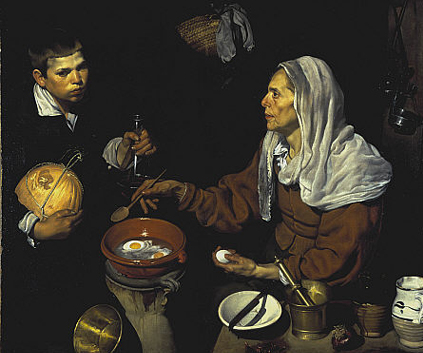Andrew Graham-Dixon on one of the most improbable and remarkable exhibitions of modern times
THE YOUNG painter Diego Rodriguez de Silva y Velazquez painted Mother Jeronima de la Fuente in 1620, the year of her departure from the convent of Santa Isabel de los Reyes, in Toledo, for the wilder shores of the Philippines. She left, the inscription that runs along the bottom half of the painting informs you, with missionary intent, her goal the establishment of 'the convent of Santa Clara de la Concepcion of the first rule of the city of Manila.' She was 66 years old when she decided to take this leap into the territory of the unconverted, but frailty was not a characteristic the painter chose to note.
Her gaze is unavoidable, a sour, accusatory glare, her mouth a study in set, stubborn sullenness. In one gnarled, prominently veined hand she clutches a bible; in the other she grips a long wooden crucifix as if it were a club. She is no pushover, this wizened but doughty figure in her coal-black robes, every inch the frontierswoman of missionary Catholicism.
Mother Jeronima stands, as intimidating as any New York security guard with his nightstick, near the entrance to 'Velazquez', an exhibition of 38 works by the greatest artist of the Spanish seventeenth century, currently at the Metropolitan Museum of Art. Velazquez, deemed 'le peintre des peintres' by Manet, has long been considered too great an artist, too evidently Olympian a figure, for a major exhibition of his work to be feasible. His works, which number little more than 100, are virtually priceless, making insurance premiums incalculable and ensuring the extreme reluctance of institutional or private owners to lend. Yet they have lent. The Prado Museum has contributed no fewer than 16 paintings, making possible what is...


